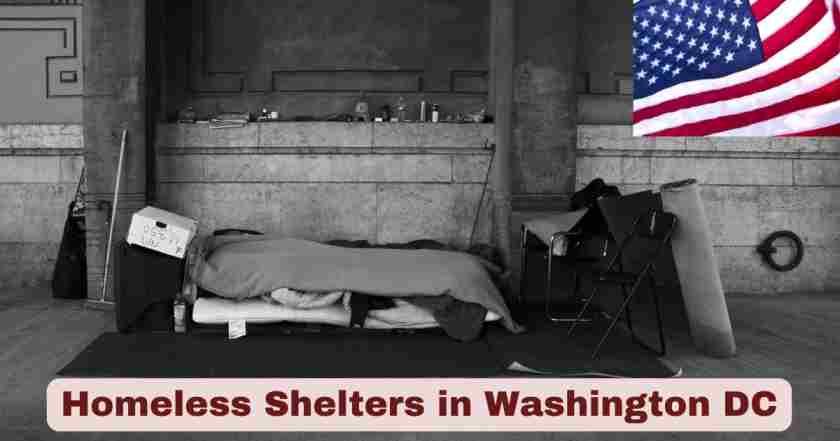Homeless Shelters in Washington DC 2025
Washington DC continues to serve as a critical battleground in the nationwide effort to address homelessness, with the city’s shelter system playing a pivotal role in providing immediate relief and long-term solutions for vulnerable populations. The District’s Department of Human Services (DHS) operates one of the most comprehensive shelter networks in the United States, offering emergency accommodations, bridge housing programs, and specialized services tailored to diverse demographic needs. The 2025 Point-in-Time Count conducted on January 29, 2025, reveals significant developments in the city’s approach to homelessness, showcasing both progress and ongoing challenges within the shelter infrastructure.
The homeless shelter system in Washington DC has undergone substantial transformation over the past decade, evolving from traditional congregate facilities to innovative non-congregate bridge housing programs that better serve individuals and families experiencing homelessness. With over 1,100 shelter beds currently available across the single adult system and additional capacity for families, the District maintains one of the most robust shelter networks per capita in the nation. The city’s strategic investments in shelter renovations, including the $148.4 million allocated for rebuilding the District’s shelter capacity, demonstrate a commitment to providing dignified, safe, and effective temporary housing solutions while individuals transition to permanent accommodation.
Interesting Stats & Facts About Homeless Shelters in Washington DC 2025
| Category | Key Facts | 2025 Data |
|---|---|---|
| Total Shelter Capacity | Single Adult System Beds | 1,100+ beds |
| New Shelter Programs | The Aston Non-Congregate Bridge Housing | 100 new beds |
| Occupancy Rate | Peak Occupancy (October 2024) | 98% occupied |
| Investment Amount | Federal City Shelter (CCNV) Renovation | $148.4 million |
| Planned Expansion | Total Year-Round Beds by 2028 | 1,733 beds |
| Available Emergency Beds | Available Beds (October 2024) | 13 beds |
| Hotline Operations | Homeless Services Hotline Hours | 8 AM – 12 AM daily |
| Transportation Services | Daily Youth Transportation | Shelter-to-services transport |
| Hypothermia Season | Emergency Shelter Period | November 1 – April |
| Regional Standing | COG Continuums with Decreases | 4 out of 8 areas |
Homeless shelters in Washington, DC play a vital role in addressing the growing needs of individuals and families experiencing housing insecurity. In 2025, the city continues to expand its capacity with over 1,100 beds in the single adult system and new programs like the Aston Non-Congregate Bridge Housing, which has added 100 new beds. Despite these efforts, demand remains high, with peak occupancy reaching 98% in late 2024, leaving only 13 emergency beds available at that time. The city has also committed a significant $148.4 million investment toward the Federal City Shelter (CCNV) renovation, a historic facility that has long served the homeless community. This investment, combined with planned expansions, is expected to bring the total number of year-round beds to 1,733 by 2028.
Beyond housing, DC homeless shelters offer crucial support services designed to improve accessibility and safety. The Homeless Services Hotline operates daily from 8 AM to 12 AM, ensuring individuals can connect with emergency shelter resources when they need them most. Youth transportation services provide safe travel between shelters and essential services, while expanded operations during hypothermia season (November 1 – April) ensure vulnerable populations are protected during harsh weather. Regionally, 4 out of 8 COG areas have reported decreases in homelessness, showing measurable progress. Still, continued investments in shelter programs and innovative housing solutions remain critical for meeting Washington, DC’s long-term homeless shelter goals.
Homeless Shelters in Washington DC 2025
| Demographic Category | 2024 Count | 2025 Count | Change | Percentage Change |
|---|---|---|---|---|
| Total Homeless Population | 5,616 | 5,138 | -478 | -9.0% |
| Families with Children | 1,657 | 1,357 | -300 | -18.1% |
| Unaccompanied Individuals | 3,959 | 3,781 | -178 | -4.5% |
| Transition Age Youth (Individual) | 200 | 179 | -21 | -10.5% |
| Transition Age Youth (Families) | 120 | 77 | -43 | -35.8% |
| Unaccompanied Minors | 16 | 10 | -6 | -37.5% |
The 2025 Point-in-Time Count results demonstrate remarkable progress in Washington DC’s homeless shelter system effectiveness, with the total homeless population decreasing by 478 individuals compared to 2024 figures. The 9% overall decrease represents one of the most significant year-over-year improvements recorded in the District’s recent history, with particularly notable reductions among families with children experiencing an 18.1% decrease. These improvements directly correlate with enhanced shelter services in Washington DC and targeted intervention programs that prioritize family stability and rapid rehousing initiatives.
Unaccompanied individuals utilizing Washington DC homeless shelters decreased by 4.5%, indicating successful transitions from temporary shelter accommodations to permanent housing solutions. The 35.8% decrease among transition age youth-headed families represents one of the most dramatic improvements, reflecting the success of specialized youth-focused programming within the homeless shelter system. The 37.5% reduction in unaccompanied minors demonstrates enhanced prevention services and family reunification efforts coordinated through the District’s shelter network.
Shelter System Investment and Infrastructure in Washington DC 2025
| Investment Category | Amount/Details | Beneficiaries | Timeline |
|---|---|---|---|
| Federal City Shelter Renovation | $148.4 million | All single adults | Ongoing |
| The Aston Bridge Housing | 100 beds | Adult-only families | Opened 2024 |
| Second Non-Congregate Site | TBD capacity | Various demographics | Opening 2025 |
| Capacity Expansion Goal | 1,733 total beds | All populations | By 2028 |
| Current Single Adult Capacity | 1,100+ beds | Single adults | Current |
The $148.4 million investment in Washington DC homeless shelter infrastructure represents the largest single commitment to shelter improvements in the District’s history, focusing primarily on the renovation and rebuilding of the Federal City Shelter (CCNV). This massive undertaking will expand the facility’s capacity while ensuring that individuals experiencing homelessness have access to safe, clean, and dignified accommodations throughout their transition to permanent housing. The investment encompasses not only physical infrastructure improvements but also enhanced service delivery mechanisms that integrate case management, mental health services, and job training programs within the shelter environment.
The Aston non-congregate bridge housing program exemplifies the District’s innovative approach to homeless shelter services, providing 100 specialized beds designed specifically for adult-only families and individuals who require alternative shelter models to access services effectively. This non-congregate model offers private or semi-private accommodations that better serve individuals with complex needs, including those with disabilities, chronic health conditions, or trauma histories that make traditional congregate settings challenging. The planned opening of a second non-congregate bridge housing site in 2025 will further expand these specialized shelter options in Washington DC.
Emergency Shelter Operations and Services in Washington DC 2025
| Service Component | Operation Details | Availability | Contact Information |
|---|---|---|---|
| Homeless Services Hotline | (202) 399-7093 or 311 | 8 AM – 12 AM daily | Year-round |
| Emergency Shelter Beds | First-come, first-served basis | Nightly | Any homeless person |
| Low Barrier Shelters | Minimal entry requirements | Daily | Most vulnerable populations |
| Hypothermia Season Expansion | Additional emergency capacity | November 1 – April | Weather-dependent |
| Front Door Navigation | Data-powered referral tool | Through hotline | 150+ referrals processed |
Washington DC’s emergency shelter operations maintain a sophisticated intake and referral system that processes hundreds of requests for assistance daily through the centralized Homeless Services Hotline. The 16-hour daily operation schedule ensures that individuals experiencing housing crises can access immediate support and shelter placement services throughout most of the day, with emergency protocols in place for after-hours crisis situations. The Front Door Navigation Tool represents a technological advancement in homeless services, utilizing data analytics to optimize shelter placements and connect individuals with appropriate diversion services before they enter the shelter system.
Low barrier shelters within the Washington DC network operate on minimal entry requirements, accepting individuals regardless of sobriety status, mental health conditions, or previous shelter violations, ensuring that the most vulnerable populations have access to immediate safety and basic services. During hypothermia season from November through April, the District expands shelter capacity beyond standard operations, opening additional emergency sites and extending hours to guarantee that no individual remains outdoors during dangerous weather conditions. The first-come, first-served emergency bed allocation system ensures equitable access while the Front Door Navigation system has successfully processed over 150 referrals to diversion services, preventing individuals from entering longer-term shelter stays.
Specialized Programs and Outcomes in Washington DC 2025
| Program Name | Target Population | 2024-2025 Results | Key Features |
|---|---|---|---|
| Project Reconnect | Newly homeless individuals | Nearly 400 diversions | Flexible funding, housing counseling |
| Permanent Housing Vouchers | All homeless populations | 550+ individuals/families | FY 2025 lease-ups |
| Peer Case Management Institute | System-wide support | First cohort graduated | Howard University partnership |
| Youth-Focused Services | Transition Age Youth (18-24) | Hundreds served | Transportation, outreach, prevention |
| Medicaid Supportive Services | Housed individuals | Nearly 9,000 households | Post-housing stability |
Project Reconnect stands as one of the most successful diversion programs operating within Washington DC’s homeless shelter system, successfully preventing nearly 400 individuals from entering extended shelter stays during FY 2024. This innovative initiative deploys specialized staff directly to shelters, day centers, and outreach teams to provide immediate housing counseling and flexible financial assistance that either diverts individuals from the homeless services system entirely or facilitates rapid exits to stable housing arrangements. The program’s success rate demonstrates the effectiveness of early intervention strategies that address housing crises before they develop into chronic homelessness situations.
The Permanent Housing outcomes achieved through Washington DC’s shelter system showcase the effectiveness of the bridge-to-housing model, with over 550 individuals and families successfully securing permanent housing vouchers during the first portion of FY 2025. The Peer Case Management Institute, developed in partnership with Howard University, represents an innovative approach to service delivery that leverages the lived experiences of formerly homeless individuals who have successfully transitioned to stability. More than half of the first graduating cohort has been employed as case managers within the homeless services system, providing culturally competent and empathetic support services to current shelter residents.
Demographics and Population Trends in Washington DC 2025
| Demographic Category | Sheltered Population | Unsheltered Population | Total Count | Trends |
|---|---|---|---|---|
| Single Adults | 3,200+ | 581 | 3,781 | 4.5% decrease |
| Families with Children | 1,200+ | 157 | 1,357 | 18.1% decrease |
| Adult-Only Families | 150+ | 25 | 175 | New category tracked |
| Transition Age Youth | 200+ | 56 | 256 | Mixed decreases |
| Chronic Homelessness | TBD | TBD | TBD | Data pending |
The demographic composition of individuals utilizing Washington DC homeless shelters reflects a predominantly single adult population, with over 3,200 individuals accessing sheltered accommodations compared to 581 unsheltered individuals. This 85% shelter utilization rate among single adults demonstrates both the adequate capacity of the District’s shelter system and the effectiveness of outreach efforts that connect individuals with available services. The family demographic shows even higher shelter utilization rates, with approximately 1,200 individuals in families accessing shelter services compared to only 157 individuals in unsheltered family situations.
Adult-only families represent a newly tracked demographic category that highlights the District’s enhanced data collection efforts and recognition of diverse family structures experiencing homelessness. The transition age youth population continues to receive specialized attention through targeted programming, with the majority of 256 individuals in this age group accessing appropriate shelter accommodations and support services. The demographic trends indicate successful shelter engagement across all population categories, with particularly strong outcomes among families with children who experienced the largest 18.1% decrease in overall numbers.
Regional Comparison and Performance in Washington DC 2025
| Jurisdiction | Population Change | Trend Direction | Regional Rank | Notable Factors |
|---|---|---|---|---|
| Washington DC | -9.0% | Decrease | Top performer | Strategic investments |
| Regional Average | Mixed results | 4 up, 4 down | Variable | Economic factors |
| National Trend | Increases | Upward | Concerning | Housing costs |
| COG Comparison | 4 of 8 decreased | Half successful | Regional leader | Policy effectiveness |
Washington DC’s performance within the Metropolitan Washington Council of Governments (COG) region establishes the District as a regional leader in addressing homelessness, with the 9% decrease significantly outperforming most neighboring jurisdictions. The regional analysis reveals that only 4 of 8 continuums of care achieved decreases in their homeless populations during 2025, positioning Washington DC among the most successful jurisdictions in implementing effective homeless prevention and shelter services. This regional leadership reflects the impact of targeted investments in innovative shelter programs and comprehensive support services that address both immediate housing needs and long-term stability factors.
The national context makes Washington DC’s achievements even more remarkable, as most jurisdictions across the United States have experienced increases in homeless populations due to rising housing costs, economic pressures, and limited affordable housing availability. The District’s success in reducing homelessness while neighboring areas struggle with increases underscores the effectiveness of the comprehensive shelter system combined with prevention, diversion, and rapid rehousing strategies. The regional collaboration through COG provides opportunities for sharing successful strategies and coordinating resources, though the mixed regional results highlight the complex challenges facing the broader metropolitan area.
Innovative Shelter Models and Technology in Washington DC 2025
| Innovation Category | Program Details | Implementation Status | Measurable Outcomes |
|---|---|---|---|
| Non-Congregate Housing | The Aston facility | Operational 2024 | 100 beds serving adult-only families |
| Data-Powered Navigation | Front Door Navigation Tool | Launched 2024 | 150+ successful referrals |
| Peer-Led Services | Case Management Institute | First cohort graduated | 50%+ employed in system |
| Youth Transportation | Daily shuttle services | Expanded 2024 | Geographic footprint increased |
| Bridge Housing Expansion | Second non-congregate site | Opening 2025 | Additional specialized capacity |
The Aston non-congregate bridge housing program represents a paradigm shift in Washington DC’s approach to homeless shelter services, moving away from traditional large-scale congregate facilities toward smaller, more individualized housing models that better serve people with complex needs. This innovative shelter model provides private or semi-private accommodations for 100 individuals in adult-only families who cannot be effectively served in traditional low-barrier congregate settings. The non-congregate approach allows for more intensive case management services, specialized healthcare coordination, and trauma-informed care delivery within a residential setting that promotes dignity and recovery.
Technology integration through the Front Door Navigation Tool demonstrates the District’s commitment to data-driven homeless services, utilizing predictive analytics and resource matching algorithms to optimize shelter placements and service connections. This technological advancement has successfully processed over 150 referrals to appropriate diversion services, preventing individuals from entering extended shelter stays and reducing overall system strain. The Peer Case Management Institute’s success, with more than half of graduates securing employment within the homeless services system, validates the effectiveness of incorporating lived experience expertise into professional service delivery models.
Funding Sources and Economic Impact in Washington DC 2025
| Funding Source | Amount/Type | Purpose | Economic Impact |
|---|---|---|---|
| Federal HUD Funding | Various grants | Operations and services | System sustainability |
| Local DC Budget | $148.4 million | Infrastructure improvements | Job creation, facility upgrades |
| Medicaid Funding | Service provision | 9,000 household support | Healthcare cost reduction |
| Federal Housing Vouchers | 550+ voucher lease-ups | Permanent housing | Long-term stability |
| Partnership Investments | Howard University | Training and education | Workforce development |
The $148.4 million local investment in Washington DC homeless shelter infrastructure represents one of the largest single commitments to addressing homelessness in the District’s history, generating significant economic impact through construction jobs, facility improvements, and enhanced service delivery capacity. This substantial financial commitment leverages federal funding streams while demonstrating local governmental priority for addressing homelessness through comprehensive shelter system improvements. The economic multiplier effect of this investment extends beyond immediate construction activities to include long-term operational improvements and enhanced service delivery capabilities.
Federal funding coordination through HUD grants and housing voucher programs provides the foundational support for daily shelter operations while enabling the District to achieve 550+ permanent housing placements during FY 2025. The Medicaid funding integration supporting nearly 9,000 households demonstrates innovative financing approaches that leverage healthcare dollars to provide supportive services that reduce long-term healthcare costs and emergency service utilization. Partnership investments with institutions like Howard University create sustainable workforce development pathways while building local capacity for service delivery through the Peer Case Management Institute.
Challenges and System Capacity in Washington DC 2025
| Challenge Area | Current Status | Mitigation Strategies | Future Plans |
|---|---|---|---|
| High Occupancy Rates | 98% capacity utilization | Capacity expansion protocols | 1,733 beds by 2028 |
| Limited Emergency Availability | 13 beds available (Oct 2024) | Hypothermia season expansion | Additional non-congregate sites |
| Regional Demand Growth | 4 of 8 areas increasing | Regional collaboration | COG coordination |
| Specialized Population Needs | Adult-only families | The Aston program | Second bridge housing site |
| Service Coordination | System navigation | Front Door Navigation | Technology enhancements |
High occupancy rates reaching 98% capacity during peak periods highlight the intensive utilization of Washington DC’s homeless shelter system, creating operational challenges while demonstrating the critical need for continued capacity expansion. The limited emergency bed availability, with only 13 beds available during October 2024, underscores the razor-thin margins under which the shelter system operates and the importance of the planned expansion to 1,733 total beds by 2028. These capacity constraints necessitate sophisticated intake management and rapid turnover protocols to ensure that emergency needs can be met while maintaining service quality.
Regional demand pressures from the broader metropolitan Washington area, where 4 of 8 jurisdictions experienced increases in homelessness, create additional strain on Washington DC’s resources as individuals may migrate to areas with more comprehensive services. The District’s response through regional collaboration via the Council of Governments provides mechanisms for resource sharing and coordinated planning, though the mixed regional performance suggests ongoing challenges in addressing root causes of homelessness across the broader area. Specialized population needs, particularly for adult-only families and individuals requiring non-congregate settings, drive the development of innovative programs like The Aston while highlighting the need for continued service model diversification.
Future Outlook
Washington DC’s homeless shelter system stands positioned for significant evolution over the next several years, with the planned expansion to 1,733 year-round shelter beds by 2028 representing a 30% increase in capacity that will fundamentally alter the District’s ability to serve individuals experiencing homelessness. The strategic investment in non-congregate bridge housing models and specialized programming suggests a continued movement away from traditional large-scale congregate facilities toward more individualized, trauma-informed approaches that better serve people with complex needs. The success metrics achieved in 2025, including the 9% overall decrease in homelessness and 18.1% decrease among families, provide a strong foundation for sustained progress, though maintaining these gains will require continued investment in both prevention services and permanent housing solutions.
The technological innovations implemented through programs like the Front Door Navigation Tool and the workforce development initiatives exemplified by the Peer Case Management Institute indicate a maturing system that increasingly leverages data-driven decision making and lived experience expertise to optimize outcomes. Regional coordination through the Metropolitan Washington Council of Governments will become increasingly critical as Washington DC’s success contrasts with challenges in neighboring jurisdictions, potentially creating additional demand for services while providing opportunities to export successful models. The sustainability of current progress will depend on continued federal partnership, innovative local funding mechanisms, and the ability to address upstream factors such as affordable housing development and economic opportunity creation that prevent homelessness from occurring in the first place.
Disclaimer: The data research report we present here is based on information found from various sources. We are not liable for any financial loss, errors, or damages of any kind that may result from the use of the information herein. We acknowledge that though we try to report accurately, we cannot verify the absolute facts of everything that has been represented.







